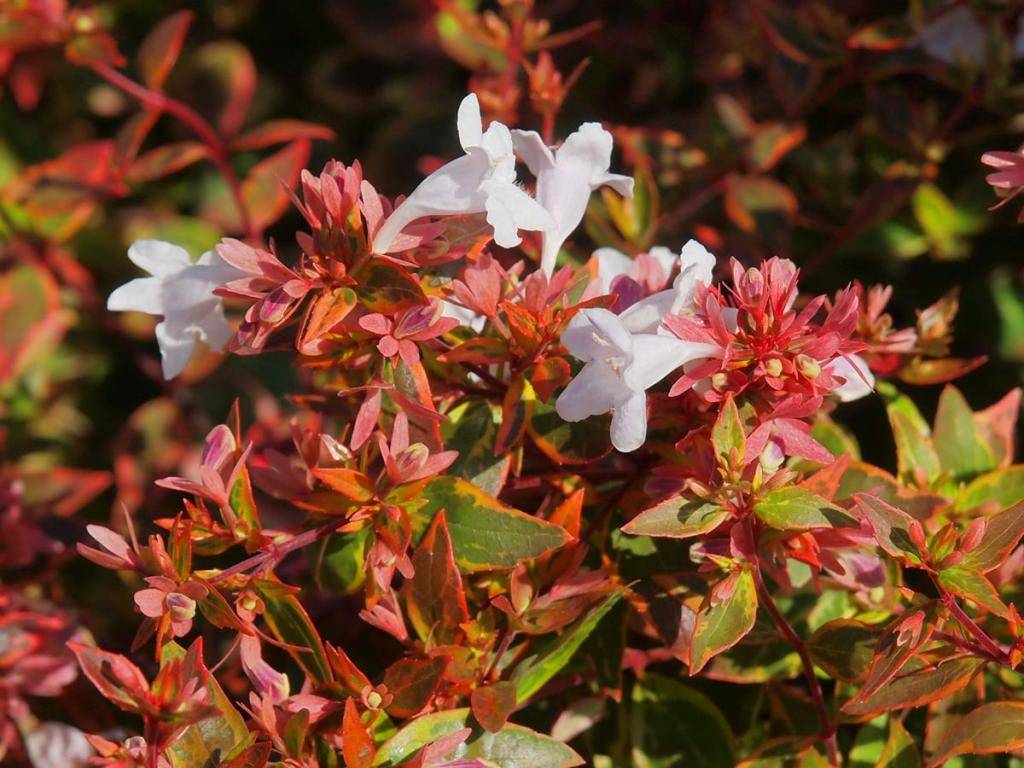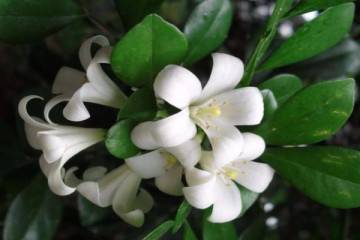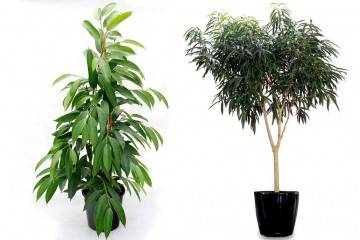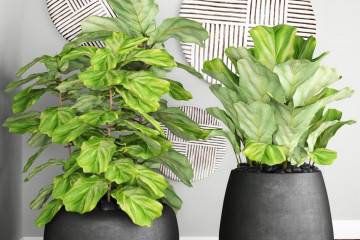Abelia large-flowered: home care and breeding methods
Content:
Abelia is a small shrub that is very popular among gardeners. Growing a plant at home doesn't require any special skills. The article contains information about the main types of plants, methods of reproduction and features of care.
Description of the main types
The genus of the plant has about 30 species, along with all hybrids. It grows in Western Japan, China, Mexico and North America. Wild species reach 6 m in height. The most common ones are:
- Abelia large-flowered (Abelia Edward Goucher);
- Abelia Kaleidoskope (Kaleidoskope);
- Abelia Mosanskaya (Mason).
They are all roughly the same, but have minor differences. This is clearly seen in comparison.
Abelia korean
Variegated shrub about 2 m in height, with oval leaves, pointed towards the end. The flowering period is April-November. During the flowering of the fragrant abelia, white flowers appear. This variety is considered semi-evergreen, because after the flowers fall off, the foliage changes to bronze.
Abelia grandiflora
The most popular hybrid form. Its leaves are dark green in color during the warm season. In winter, they turn bronze-red. Reaches 180 cm in height, blooms continuously from May to September. Winter hardiness zone 5-8.
Abelia grandiflorum
The plant is very popular among gardeners because it is easy to care for. Green leaves are located oppositely on the shoot. Flowers are collected in lush bunches and decorate the entire bush. Each brush is composed of a large number of five-petal flowers in purple or white.
Abelia: home care
The plant is unpretentious in care and does not require special knowledge and skills.
Humidity
It is worth increasing the humidity only on especially hot days. This can be done using a sprayer.
There is no need to humidify the air in winter.
Lighting
Abelia is a light-loving plant, but direct sunlight is undesirable.
Temperature regime
The plant is comfortable at normal room temperature in summer and autumn. In winter, abelia should be placed in a cool place where the air temperature does not exceed 15 ° C.
The soil
It grows best in acidified soil. You can prepare the soil yourself. This will require:
- peat;
- a little humus;
- sheet soil;
- black soil;
- fine-grained sand.
You can also purchase ready-made substrate in specialized stores.
Watering
You need to moisturize the plant abundantly. When the abelia blooms, watering should be increased. However, closer to winter, the amount of water should be reduced and minimized, but not allowed to completely dry out the soil.
Reproduction methods
There are two easy ways to breed and plant:
- cuttings. After cutting the stem cuttings 10-12 cm long, they are placed in the refrigerator. The cut should be immersed in a solution that increases the rate of root formation. After that, place in a pot with a substrate consisting of perlite, sand and peat.It is necessary to periodically spray seedlings and soil with warm water. In winter, water no more than once every 10 days. The room temperature should not exceed 20 ° C. If the plant is properly cared for, then rooting will occur within six weeks;
- seeds. Seeds are sown in winter. They need a lot of moisture to germinate, so you need to water the seeds often and abundantly. The container should be covered with glass or plastic to create a greenhouse effect. After the sprouts appear, the shelter is removed and the container is transferred to a warm room.
Abundant and long flowering, pleasant aroma and gently curved branches of Abelia will delight the eye for more than one year with proper care and timely watering. The growing process is quite easy, so even a beginner can handle it.


















